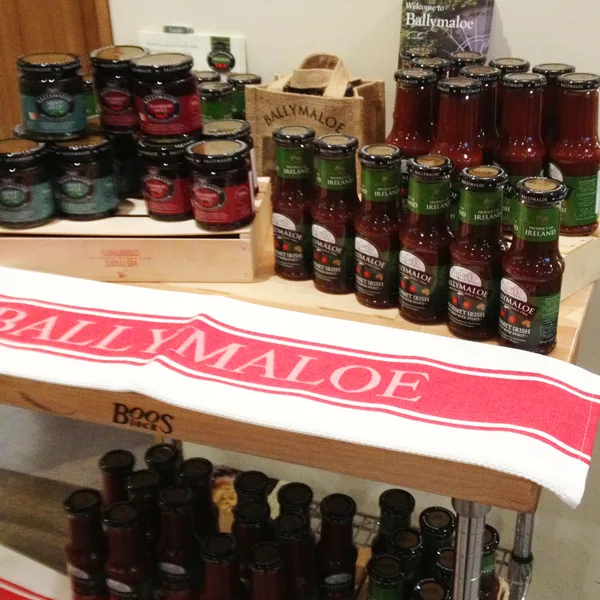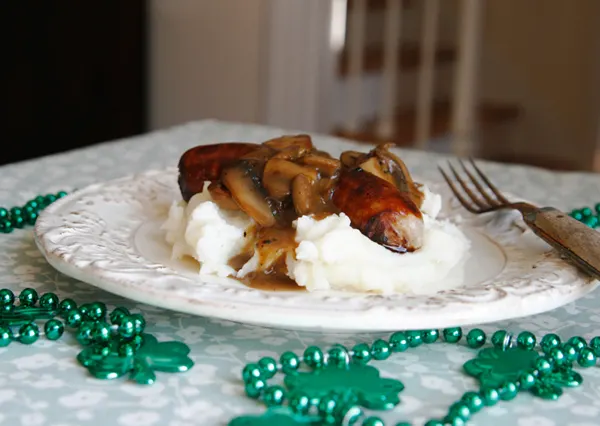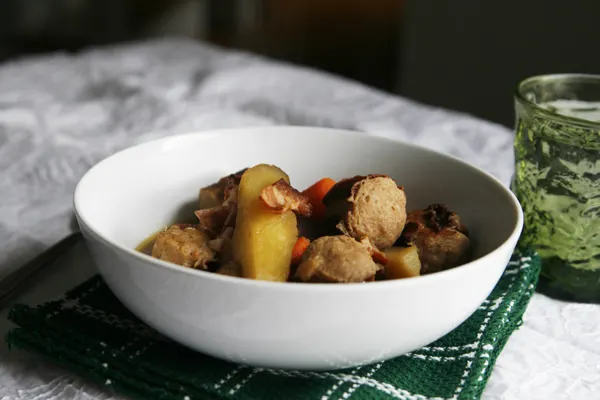Can we get something straight? That corned beef and cabbage bubbling away in the kitchen as a way to pay homage to St. Patrick is … not Irish at all. In fact, that combination — corned beef and cabbage — is something that came straight from America. While it might be too late to trade the boiled dinner for something a little more authentic, modern Irish food is worth paying attention to.
These days, Ireland’s food scene is a growing melting pot of techniques and flavors coupled with the farm-to-table style that is deeply rooted there. Restaurants like Dublin’s L’Ecrivain are serving up Irish food with French influences and others like Galway City’s Ard Bia create inventive locally-sourced dishes Line-Caught Irish Hake with Herb Gnocchi, Organic Artichokes, Courgettes and Wilted Leaves entree (which totally makes my mouth water thankyouverymuch).
“It’s really become quite diverse in recent years [in Dublin]. It’s been really good for the food industry,” says Sean Hyde of Ballymaloe Foods USA, which is bringing the famed condiments from Ballymaloe Country House, an inn and cookery school in County Cork, to the United States. Their line of Irish ketchups, relishes and more are now being sold across the country in stores like A&P and via services like Fresh Direct.
Hyde says that Ireland’s once-bland cuisine has flourished since the 1960s. “Ireland has such great ingredients [like] meat and dairy,” says Hyde. “We never had that kind of food culture that France or Italy had, so I guess we are more susceptible to change. We’ve kind of taken experience from other countries [and made it our own].”

At a recent United States launch event for Ballymaloe’s line of Irish ketchups and relishes held at Murray’s Cheese in New York, a chef from Ballymaloe’s cookery school served up well-seasoned lamb sliders on beds of mashed potatoes with a drizzle of the fresh and light Ballymaloe Mint Jelly. Unlike the brilliantly green American version of mint jelly, Ballymaloe’s is clear with visible specks of mint.
There was also crisp crostini with a soft cheese and a spoonful of Ballymaloe Cranberry Relish. Fried croquettes with smooth, melty insides were served with the slightly chunky Ballymaloe Original Sauce for dipping.
There’s nothing bland about any of that.

“We just wanted to do something with our own products just showing how far Irish food has come,” Hyde explained during the event. And so it has. While Ireland really didn’t have much of a cuisine (or restaurant scene) in the early 20th century, that’s all changed — and Hyde’s family is partly to thank for that.
In the 1960s when Hyde’s grandparents Myrtle and Ivan Allen opened the family home at Ballymaloe as a restaurant, the restaurant was locovorism at its best — the restaurant used unpasteurized milk and cream from their own cows, homemade sausages and black puddings and herbs, fruits and veggies from the Ballymaloe farm. Fish and other ingredients came from local purveyors.
“What my grandmother started with Ballymaloe was that she went back to the good ingredients and using good recipes from around the world to create this modern Irish cuisine. It was revolutionary in the 1960s. Before then, it was fair to say that the stereotype was correct,” admits Hyde.

Today, many ingredients for the restaurant and cookery school are grown on the premises still. There are pigs and Jersey cows, and many crops. Although Ballymaloe has been importing some of their condiments to the United States for 15 years, they have only recently worked to carve a niche for their finely crafted products. Hyde says that while Ballymaloe — a well-known and respected brand in Ireland — doesn’t have the same brand recognition here, which is a challenge — but one he is working to overcome.
But now, Ballymaloe is expanding their U.S. offerings and trying to break into the ketchup market with their zesty Irish ketchup varieties with short, completely pronounceable ingredients lists.

If you want to explore more about modern Irish cuisine, Yahoo! Food has two great articles worth reading: 7 Myths about Irish Food Busted and Skip the Corned Beef and Cook Up an Authentic St. Patrick’s Day Feast. Also, pop over to Momtastic to check out my recipe for Bangers and Mash with Mushroom Gravy, a great Irish dish with big flavor.


Carrie @ poet in the pantry
Monday 17th of March 2014
Aha! The mystery of the Irish ketchup revealed! That plate of bangers and mash looks amazing. Definitely checking that out next!
Sarah W. Caron
Monday 17th of March 2014
Carrie, they make a version with stout in it! It's got me giddy with excitement.